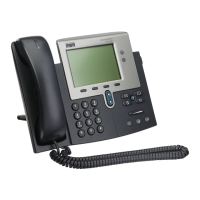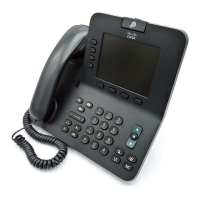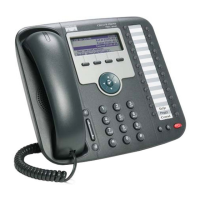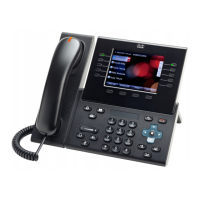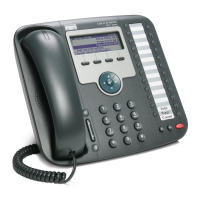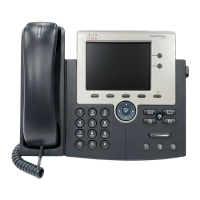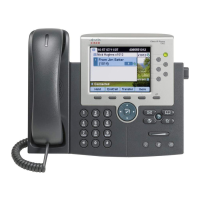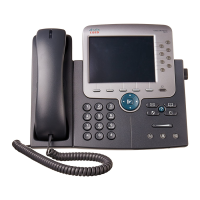Chapter 1 An Overview of the Cisco Unified IP Phone
Overview of Configuring and Installing Cisco Unified IP Phones
1-34
Cisco Unified IP Phone 7931G Administration Guide for Cisco Unified Communications Manager 6.0
OL-12457-01
4. Configure the following
network settings on the phone.
To enable DHCP:
• Set DHCP Enabled to Ye s
• To use an alternate TFTP
server, set Alternate TFTP
Server to Ye s and enter IP
address for TFTP Server 1
To disable DHCP:
• Set DHCP Enabled to No
• Enter static IP address for
phone
• Enter subnet mask
• Enter default router IP
addresses
• Enter domain name where
phone resides
• Set Alternate TFTP Server
to Yes and enter IP address
for TFTP Server 1
Using DHCP—The IP address is
automatically assigned and the
Cisco Unified IP Phone is
directed to a TFTP Server.
Note Consult with the network
administrator if you need
to assign an alternative
TFTP server instead of
using the TFTP server
assigned by DHCP.
Without DHCP—You must
configure the IP address, TFTP
server, subnet mask, domain
name, and default router locally
on the phone.
See the “Configuring Startup
Network Settings” section on
page 3-13.
See the “Network Configuration
Menu” section on page 4-7.
5. Set up security on the phone. Provides protection against data
tampering threats and identity
theft of phones.
See the “Configuring Security on
the Cisco Unified IP Phone”
section on page 3-13.
6. Make calls with the Cisco
Unified IP Phone.
Verifies that the phone and
features work correctly.
Refer to Cisco Unified IP Phone
7931G for Cisco Unified
Communications Manager 6.0.
7. Provide information to end
users about how to use their
phones and how to configure
their phone options.
Ensures that users have adequate
information to successfully use
their Cisco Unified IP Phones.
See Appendix A, “Providing
Information to Users Via a
Website.”
Table 1-7 Checklist for Installing the Cisco Unified IP Phone 7931G (continued)
Task Purpose For More Information

